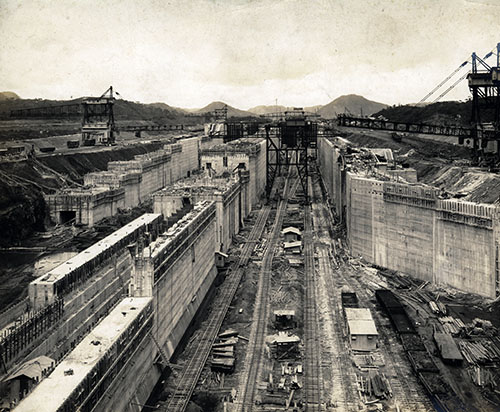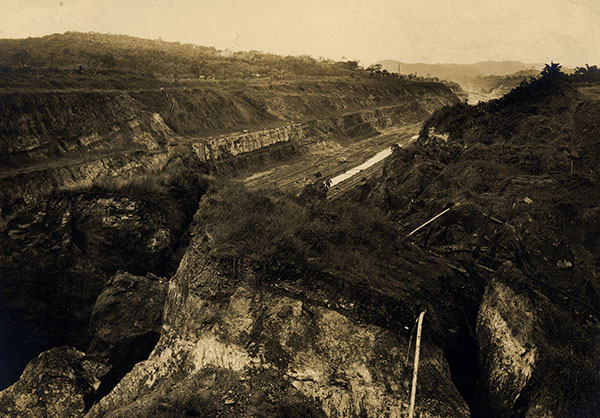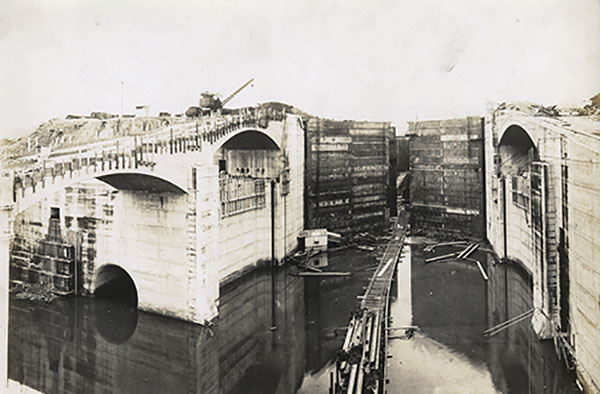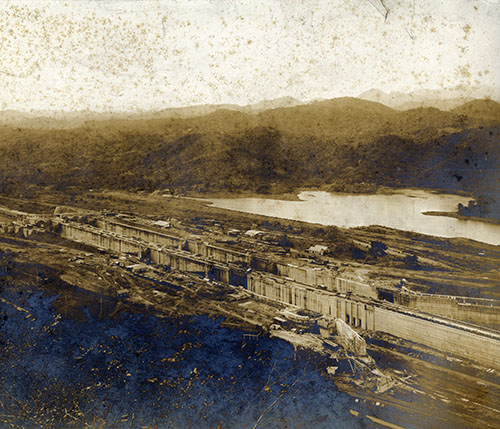The Panama Canal construction project was headed by the United States, which controlled it in some way until all management of the canal was finally handed over to the country of Panama on December 31, 1999. The canal is a manmade, lock-type canal that extends across the Isthmus of Panama to connect the Atlantic and Pacific Oceans. Without the Panama Canal or a similar connection, a ship traveling from New York to California would add approximately 8,000 miles to a voyage by sailing around the entirety of South America.

Canal locks at Miraflores
Although construction of the Panama Canal only began in the twentieth century, first mention of a passageway between the Atlantic and Pacific Oceans far predates this modern project. In the 1500s, Spanish conquistador Vasco Núñez de Balboa was the first to record observations that the thin strip of the Isthmus would be an ideal location for a canal between the two oceans. However, the mountainous terrain and tropical environment made the project impossible for the technology of the time.

The mountainous landscape of the Panama Canal
The first attempt to construct a canal in the area was initiated in 1881 under the guidance of French diplomat Ferdinand de Lesseps. Lesseps had successfully directed the construction of the Suez Canal connecting the Mediterranean and Red Seas in the 1860s, but he was unprepared for the jungle climate he and his crew would face in Panama. Their machinery was not well suited for the terrain and tropical diseases ravaged the French laborers. Lesseps’ company soon collapsed, and all work on the canal had stopped by 1898.

Pedro Miguel Locks
Earlier interest by the United States in a canal connecting the Atlantic and Pacific Oceans centered on Nicaragua instead of Panama. Selecting Nicaragua as a canal location, however, posed an increased risk of seismic activity as construction would have to pass through an active volcano, Mount Momotombo. Engineers strongly discouraged the Nicaragua Canal plan. Ultimately, President Theodore Roosevelt took up the campaign for a canal across the Isthmus of Panama in the midst of international tensions over the separation of Panama from Colombia. The Panama Canal’s construction under United States administration officially began in 1904. The work ahead would be prolonged and arduous.

Pedro Miguel Locks and surrounding mountains
NEXT SECTION: The Culebra Cut